Llanfaethlu WwTW (2018)
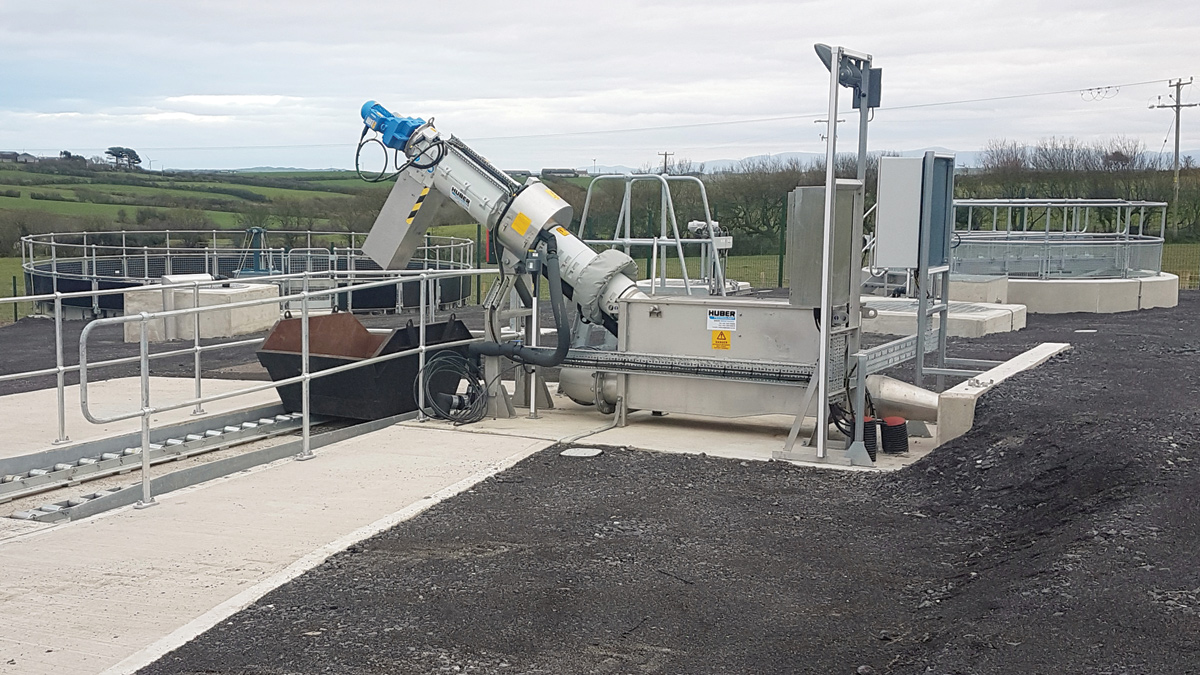
Huber screen at inlet including waste disposal skip - Courtesy of Dawnus Construction Ltd
Llanfaethlu Wastewater Treatment Works (WwTW) is situated to the north east of the village in Anglesey, North Wales and is owned and operated by Welsh Water. Constructed in the 1960s as a conventional gravitational treatment works, the process utilises primary settlement, stone media trickling filter and humus settlement discharging to a grass plot, together with manual de-sludge and liquor returns. The existing WwTW at Llanfaethlu had changed little since first built even though the village had increased in size considerably (approximately 30%), now serving approximately 260 persons. The existing works needed investment and there was a need to bring aging kit into serviceable condition and provide improved accessibility for operative attendance and tanker operations. The growth of the village had also increased surface water which had been problematic, and the new works needed to address this issue.
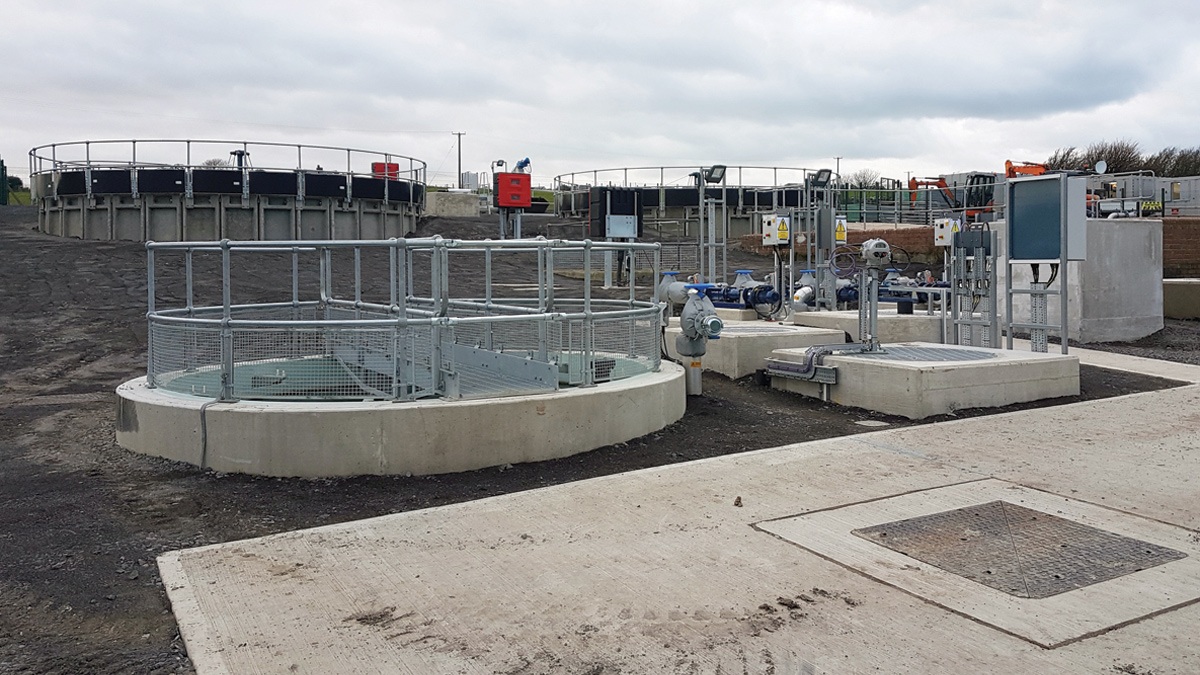
New humus tank and pump array – Courtesy of Dawnus Construction
Project driver
The increase in flow and load resulting from numerous factors, including the development of a new collector school opening in September 2017 (3 local primary schools into 1) together with up to ten additional properties proposed in the LDP would result in flows from the catchment exceeding the treatment capacity of the WwTW. Headroom calculations indicate that the current asset would become hydraulically and organically overloaded.
The proposed new school had become the primary driver and the new treatment process for the WwTW had to be in place before the school opened in September 2017.
Feasibility study
The first stage in determining the best solution for the catchment of Llanfaethlu was for Welsh Water to engage Waterco to undertake a feasibility study during late summer 2016. This study considered the following:
- Option 1: Pump away to another WwTW locally – Rhydwyn proved nearest suitable location at 2000m away with spare capacity, including an upgrade of the Rhydwyn WwTW.
- Option 1a: Pump away to another catchment approximately 2000m away.
- Option 2: A new RBC (single unit) to replace the existing WwTW and utilise the existing outfall unit size dependent on degree of rainwater removal from upstream catchment (Llanfaethlu).
- Option 3 (additional from brief): Upgrade the existing WwTW to provide the require hydraulic capacity and meet the new discharge consent.
- Gravity sewer option: A gravity sewer transfer to Rhydwyn WwTW option was also examined but discounted due to the local topography.
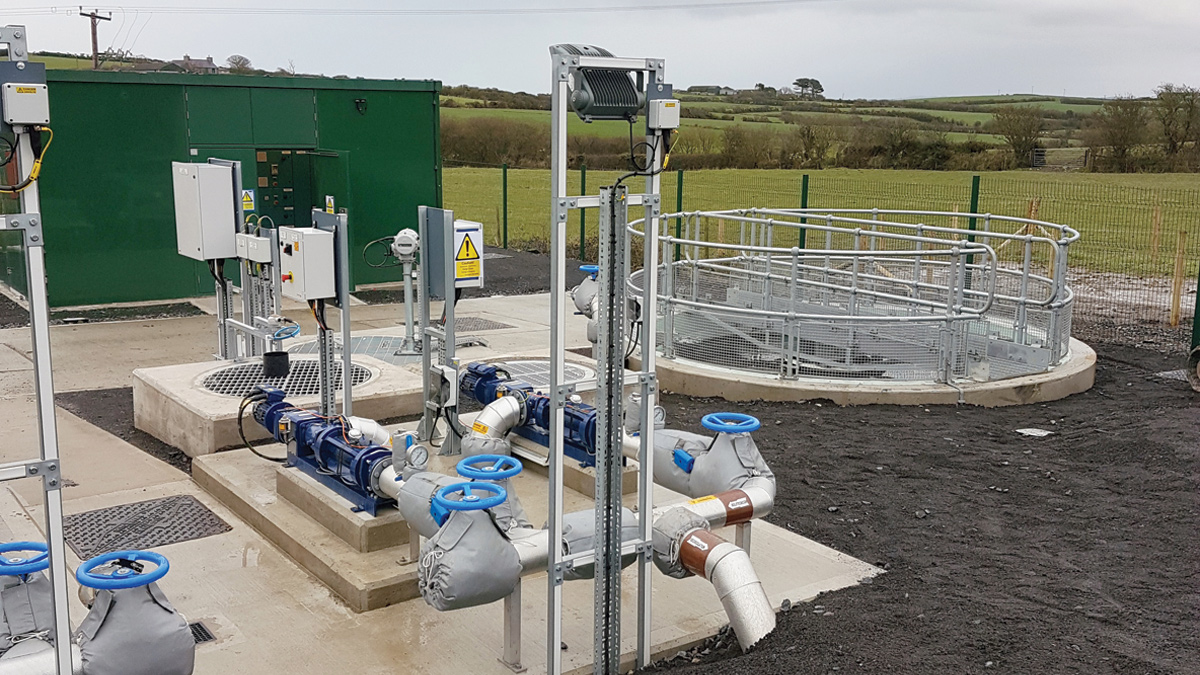
Humus tank and works return pumps looking toward MCC – Courtesy of Dawnus Construction
Options review
During the options review it was discovered that within the village of Llanfaethlu there is approximately 3100m2 of impermeable area discharging surface water into the sewer system from both roof and highway sources. The village of Rhydwyn also has an area of impermeable surface (0.1854ha), discharging into the foul sewer to the works. In all options considered, there was a significant benefit to undertake a scheme to remove as much as ‘practically’ possible of the surface water runoff before finalisation of the preferred solution for the WwTW improvements/replacement.
Welsh Water at this early stage established a team including Waterco to deliver this project using collaborative working, at first using a facilitator but later managed by a Welsh Water project coordinator. The team involved key people from within Welsh Water and Waterco and later by a representative from Dawnus Construction Ltd. This approach was adopted to speed the delivery to achieve the desired target date and to head off in advance any blockers. It was successful and allowed for tight management of the programme together with contractor input.
The selected option was to add an additional traditional treatment stream, refurbish and upgrade the current works and to produce an effluent quality that would meet the requirements of the new tighter consent. It was also to improve access to and around the site and upgrade the site security.
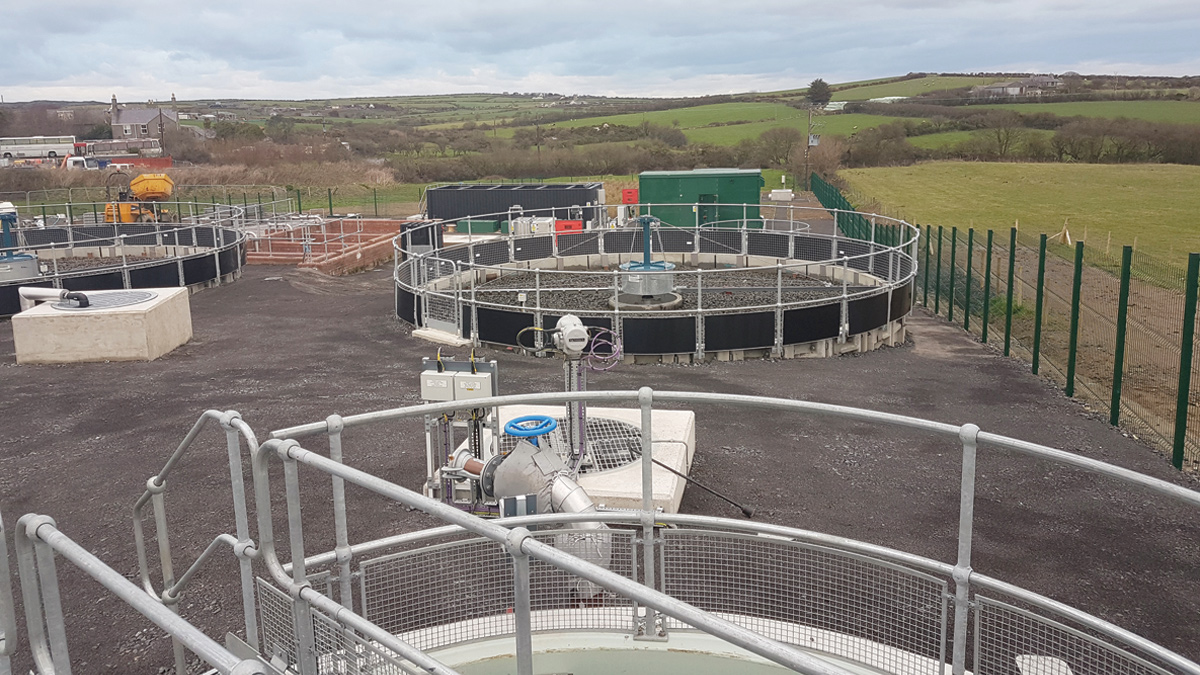
General view from primary tank over the site before stone dressing to surface – Courtesy of Dawnus Construction
Design and build
Welsh Water opted for a design and build delivery approach for the detailed design and construction phase with local framework contractor Dawnus Construction Ltd retaining Waterco as their principal designer. The use of collaborative working was extended throughout the delivery of the project and guided by the Welsh Water project coordinator.
Fortnightly collaboration meetings involving Welsh Water Operations took place throughout the detailed design stage. With the same people in place throughout the programme it resulted in greater benefit of depth of understanding of the issues involved; and the group dynamic was efficient and friendly with each appreciating the needs of others and the requirement to deliver.
As the design progressed, a public meeting was to be held to ensure suitable communication to the local population. Welsh Water was keen to keep the public informed and to assist with this, a 3D fly over was produced together with still-images to help local residents visualise what was going to be built.
The capital works included civil, electrical and mechanical aspects, therefore successful project delivery required close working with all sub-contractors. Commissioning managers were employed on the scheme to ensure that the new works were fully compliant and in accordance with Welsh Water specifications.
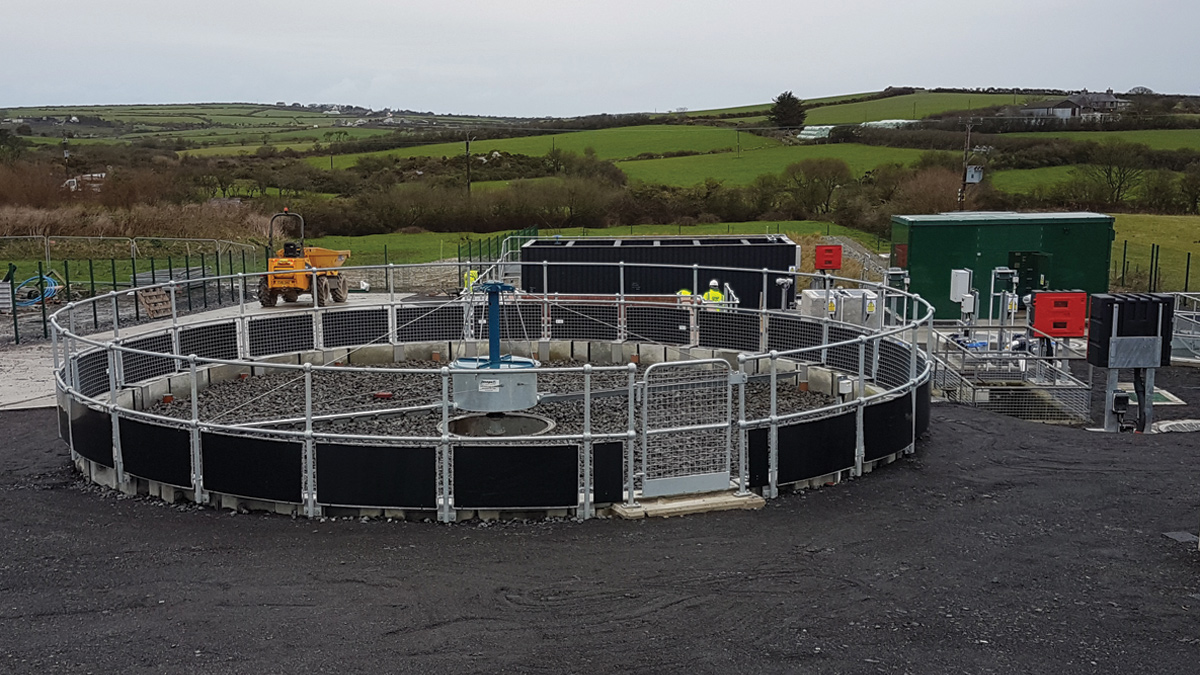
Filter bed with storm tank in the background – Courtesy of Dawnus Construction
Project deliverables
As the site was an existing and functioning WwTW it was imperative that the site remained operational throughout the construction phase. Therefore, the design and subsequent construction of the works was carried out in a manner that did not adversely affect the functioning of the treatment process, which could lead to a consent failure. Collaborative working (including the three main players; Welsh Water, Waterco, and Dawnus Construction Ltd) during the detailed design phase paid dividends in this respect, as the ongoing operation of the works was always a key factor in each design detail.
As an active and operational WwTW it was key that the delivery team considered the existing structures, equipment and plant inside and outside the works boundaries including security. The site had several structures and shallow pipes that were essential to the continuation of the process.
Any alterations had to ensure that the process treatment was maintained throughout the construction period.
Phase 1 was to construct a new parallel treatment stream comprising a new reed bed, primary settlement, filter bed, humus tank and refurbishment of the existing sludge beds whilst maintaining treatment. Completing of Phase 1 allowed the existing WwTW to be taken off line, demolished and upgraded (phase 2).
Phase 2 included online modifications and upgrades of the existing works followed standards specification, design standards and codes of practise set out in CESWI with Welsh Water amendment.
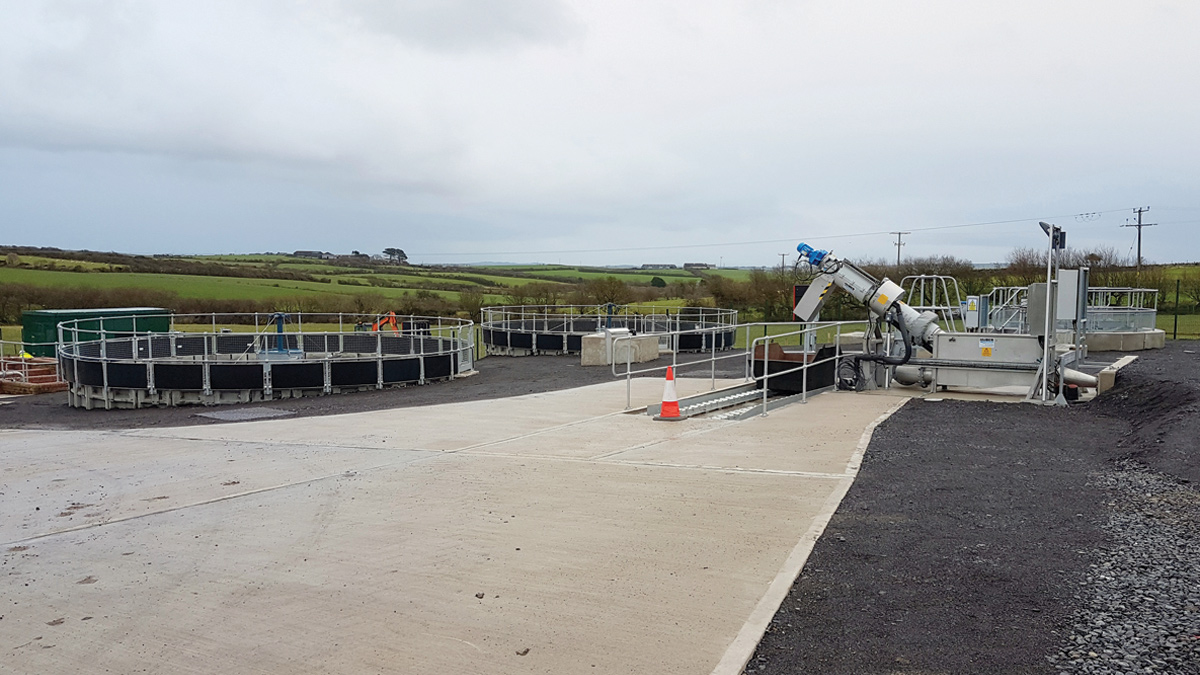
General view – Courtesy of Dawnus Construction
During phase 1 and 2 the following work was carried out
- Incoming pipework and hatch-box chamber regraded to suit new inlet screen.
- 6mm mechanically cleaned Huber screw inlet screen with wash system and mini skip disposal.
- Storm overflow weir in chamber.
- Inlet flow control valve with electromagnetic flow meter.
- Recirculation/flow return chamber.
- Primary settlement tank, ancillaries and auto de-sludge valve.
- Provision of 2 (No.) new biological filters using precast system, stone media and hydraulic trickle filter arms.
- Humus settlement tank, ancillaries and auto de-sludge valve.
- One piece above-ground storm tank, with walkway and auto empty control valve.
- Reed bed to provide tertiary treatment with additional storm capacity.
- Recirculation pumps and wet well.
- Works return pumps with electromagnetic flow meter control.
- MCERTS installation to include Magflow meter, temperature gauge, rainfall gauge.
- Final effluent sampling point.
- MCC panel within new GRP kiosk.
- Washwater set c/w reel locations at locations requested by Welsh Water Operations.
Previous issues caused by ragging and blockages have been addressed by the new inlet screen which takes them out of the flow, washes and deposits into a skip for separate disposal. Wastewater process review identified opportunities for tertiary treatment enhancement with a vertical flow reed bed improving the final effluent discharged to the existing outfall to the nearby watercourse; and providing additional storm treatment capability.
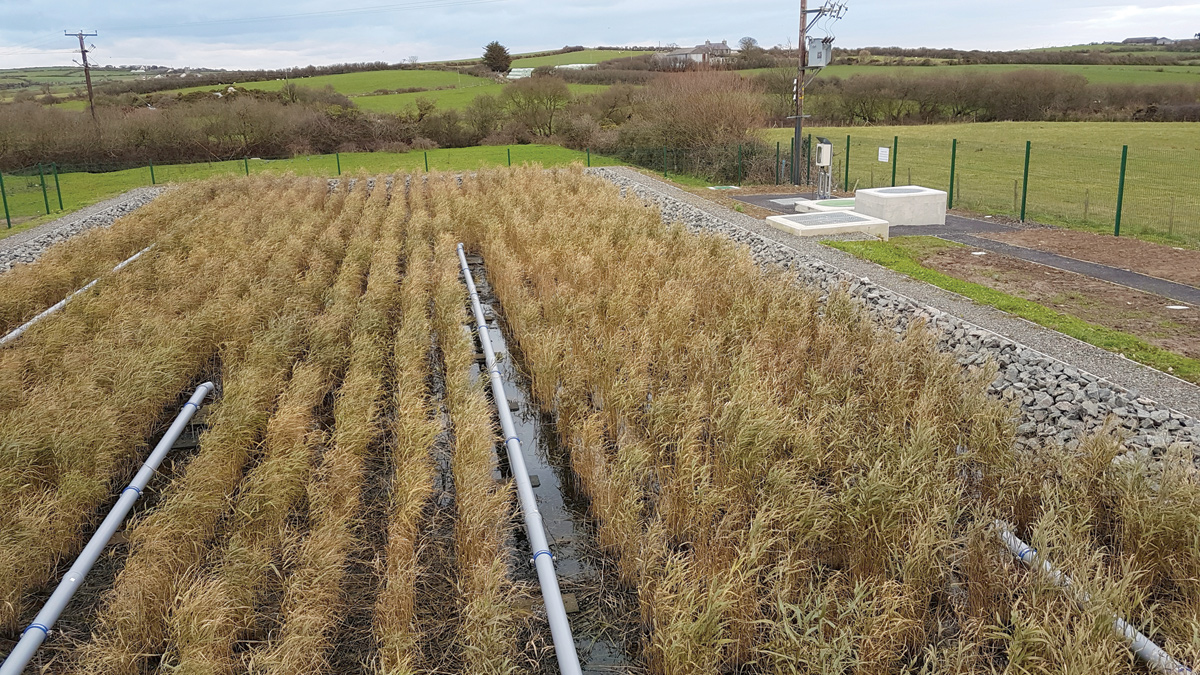
Reed bed – before discharge through MCERTS structure (to the right) – Courtesy of Dawnus Construction Ltd
Additional works
The current site was accessed via an un-surfaced track from the A5025. The project took the opportunity to upgrade the existing stone track with improvement to its alignment. Within the site a concrete roadway and turning head was provided and trolley access paths for plant maintenance.
The improvements now mean a road tanker can access the site for de-sludge or other operational requirements and the operative can now access the site in his vehicle with tools or other items without trudging over the field as before. The site has also been made more operative-friendly with automation of the de-sludge activities and flow control via the flow meters and mechanised valves.
The areas between the various process tanks and treatment systems has a hardcore surface for ease of access and eliminate the need for grass control. Improved lighting also provides a safe working area in low light conditions when needed. The MCC kiosk also includes a toilet and washroom facility to improve the welfare that did not exist previously.
Further site improvements included new security rated fence and double width access gate to the WwTW site. The previous problem of overland flooding (field above slopes to the site) has been considered and new site drainage using a French drain with separate outfall to intercept groundwater and surface water run-off was installed.
To ensure successful operation and maintenance full training was provided and a supporting O&M manual produced for Welsh Water records.
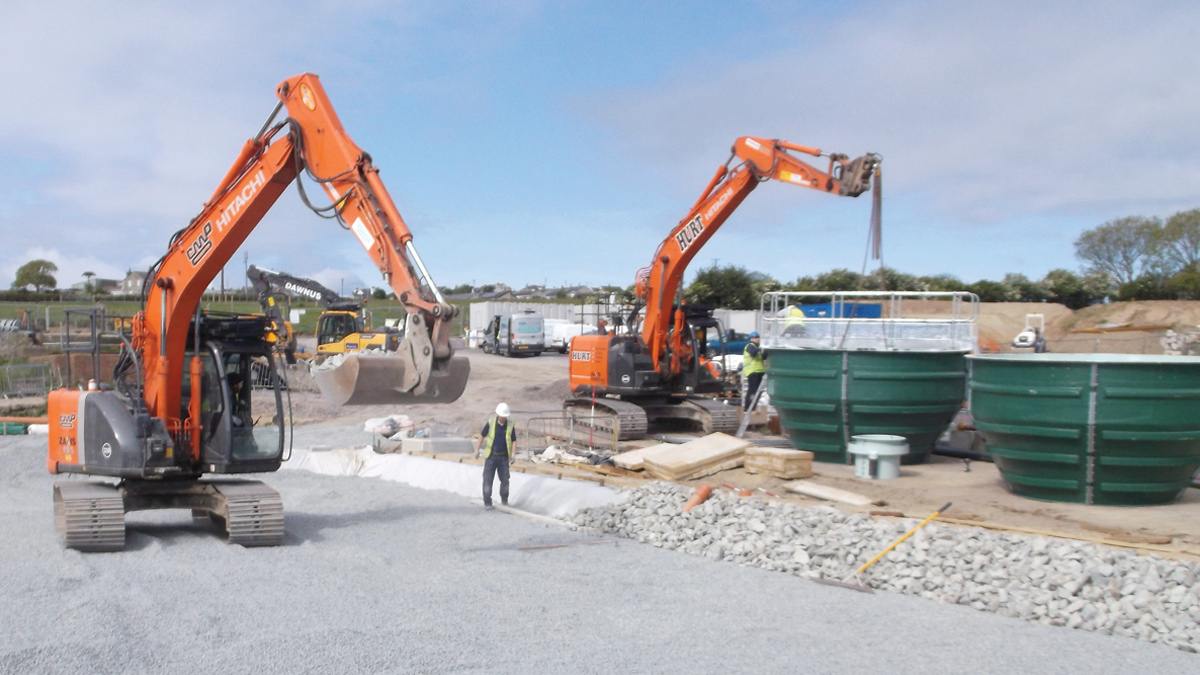
WPL Ltd pre-formed conical tanks used for the primary and humus tanks – Courtesy of Dawnus Construction
Surface water discharge
In parallel with design and works within the site, investigations within Llanfaethlu were undertaken to determine the extent of surface water discharging to the sewer – the aim being to try and develop a scheme that would remove a substantial element of this inflow.
Whilst the survey and development of a substantial surface removal scheme was possible, it did not become reality, proving too costly at this juncture. Two areas of highway water run-off were successfully removed with the assistance of the local highway authority and two large areas removed by local cooperation. Due to the collaborative working the design for the works was able to take into account the reduced area of rainwater removal.
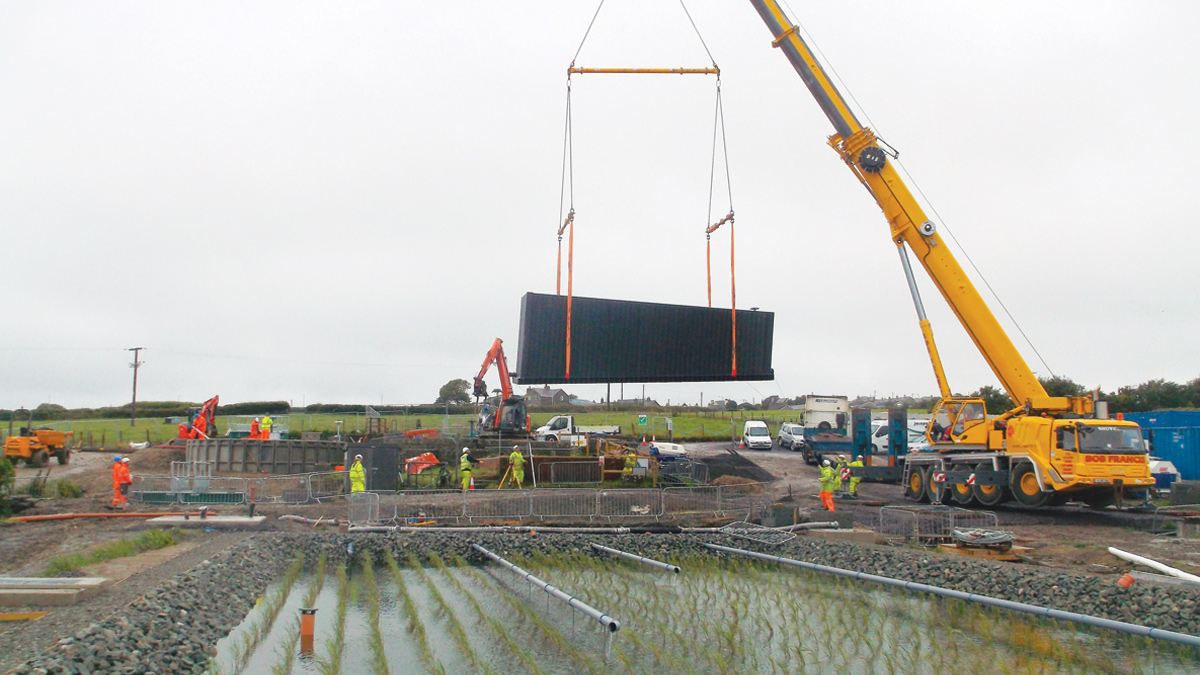
New one piece ‘plug and play’ storm tank and reed bed shortly after planting in foreground – Courtesy of Dawnus Construction
Should the larger scheme be able to be implemented in the future, the works will be able to be zoned down to reduce operating costs.
Llanfaethlu WwTW – Table of designers, contractors and suppliers
- Designer: Waterco
- Principal contractor: Dawnus Construction Ltd
- Electrical contractor: Lloyd Morris Electrical Ltd
- Mechanical contractor: Whitland Engineering
- Reed bed construction: ARM Group
- Filter bed distribution arms: Jacopa Ltd
- Washwater kiosk and hoses: Xylem Water Solutions UK
- Precast circular biofilters: PF McCann
- Sludge progressive cavity pumps (Llanfaethlu): SEEPEX UK Ltd
- Primary and humus tank: WPL
- Weholite® torm tank: SDS Limited
- Inlet screen: Huber Technology
- Commissioning engineers: TrefEng Ltd
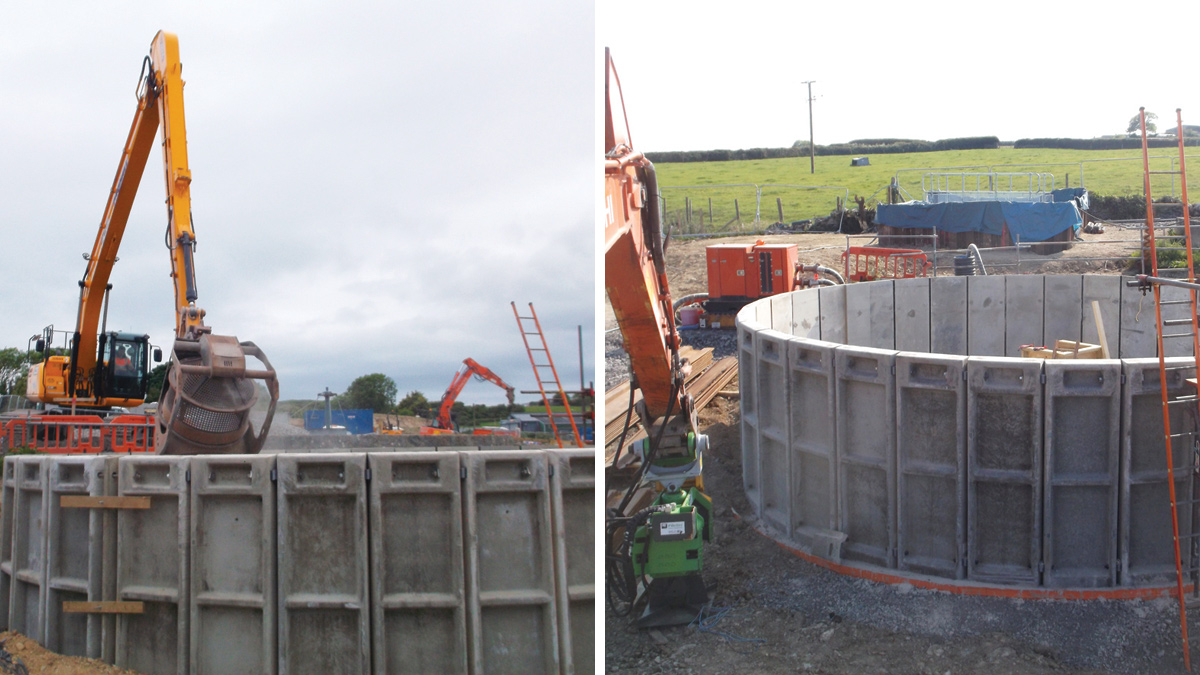
FP McCann filter bed – Courtesy of Dawnus Construction
Innovations
- Use of one-piece primary and humus tank by WPL reduced construction time and risk, together with materials and needed minimal excavation and foundation.
- Use of one-piece storm tank by Weholite® reduced construction time and risk, together with materials and needed minimal excavation and foundation.
- Use of precast circular bio-filters by FP McCann reduced programme and construction risks.
- Use of precast chambers or materials were possible to improve site efficiency and reduce contactor risks – concrete in winter etc.
- Use of flow meters to regulate flows from storm tank and works return to manage the low flow condition as well as high flow both critical at this site – in summer dry weather flow is almost zero at times! Sudden storms cause major short duration events producing a lot of surface water that is stored before slow release back to treatment.
- In event of continuous storm condition, the reed bed can treat the overflow and provide an additional storage buffer with treatment before release via the MCERTs meter.
- Collaboration facilitated efficient project delivery for a complex scheme with tight timescales.
- Reuse of assets. The existing sludge beds were well built and needed little reworking/improvement to bring back into full productive use. The existing humus was retained though will only be used rarely when new humus settlement is taken off line for maintenance.
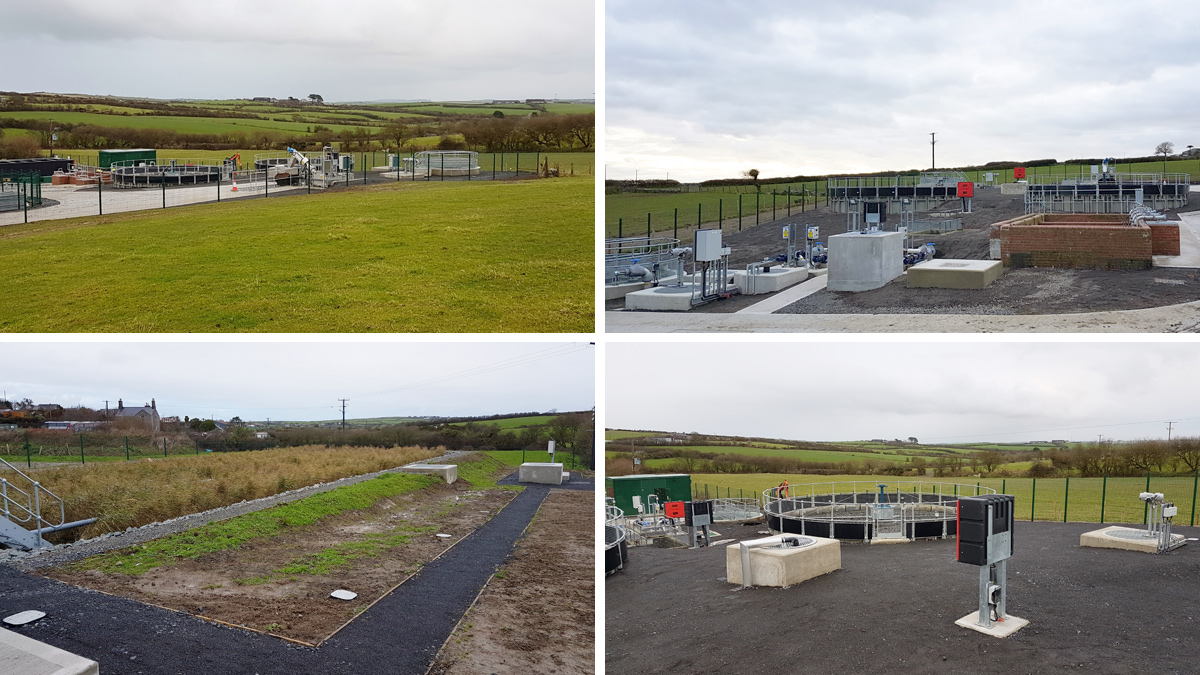
Llanfaethlu WwTW – Courtesy of Dawnus Construction Ltd
Project success
The project commissioned in August 2016 and was completed in early, November 2017.
The school opened on time and flows were received and successfully treated at the new works and following successful completion, helped facilitate new residential development in a rural area.









